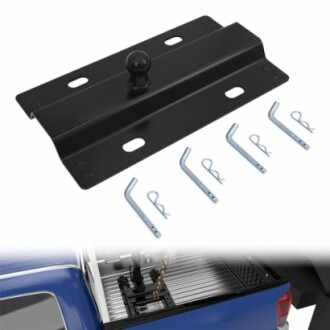
The Do's and Don'ts of Using Trailer Hitches
Key Takeaways
- Ensure the trailer hitch matches your vehicle's specifications.
- Regularly check the hitch and its components for wear and damage.
- Use safety chains and other locking mechanisms to enhance security.
- Avoid exceeding the weight rating of your hitch and vehicle.
- Always follow manufacturer guidelines for safe towing practices.
Towing can be a straightforward process when done correctly. However, misuse of trailer hitches can lead to accidents and damage to your vehicle or trailer. This guide outlines the essential do's and don'ts of using trailer hitches to ensure a smooth towing experience.
Understanding Trailer Hitches
Trailer hitches are critical components of towing systems. Properly understanding your trailer hitch types and their weight ratings is essential before hitting the road. Below is a brief overview of common hitch types:
| Hitch Type | Description | Weight Capacity |
|---|---|---|
| Ball Hitch | Commonly used for lightweight trailers. | Up to 2,000 lbs |
| Gooseneck Hitch | Ideal for heavier loads, attached to the truck bed. | Up to 30,000 lbs |
| Fifth Wheel Hitch | Provides a secure connection for larger trailers. | Up to 20,000 lbs |
The Do's of Using Trailer Hitches
- Do match the hitch to your vehicle: Make sure the hitch size and rating suit your towing vehicle.
- Do perform regular inspections: Check for wear, rust, or damage before each use.
- Do use weight distribution systems: These can help stabilize the load and enhance safety.
- Do secure your load: Use safety chains and locks to prevent detaching during transit.
- Do follow weight ratings: Stick to the manufacturer's specifications to avoid accidents.
The Don'ts of Using Trailer Hitches
- Don't exceed your hitch's weight capacity: This can lead to equipment failure and accidents.
- Don't ignore the manual: Always refer to the vehicle and hitch manuals for guidelines.
- Don't use a damaged hitch: This poses serious safety risks.
- Don't forget the lights: Ensure that the trailer lights are functioning properly.
- Don't tow with unbalanced weight: Distribute weight evenly to ensure stability.
Product Spotlight: Universal Gooseneck Ball Plate
When it comes to safe towing, a reliable gooseneck hitch is essential. One highly-rated option is the Universal 30,000 lbs Gooseneck Ball Plate. Here’s what makes it stand out:
Universal 30,000 lbs Gooseneck Ball Plate
This gooseneck adapter enhances your towing capabilities, allowing for smooth trailer connections and improved stability.
Learn MoreCommon Trailer Hitch Mistakes to Avoid
Understanding common mistakes can help you avoid serious problems. Here are common issues faced by users:
| Mistake | Consequences |
|---|---|
| Neglecting maintenance | Increases risk of breakdown and accidents. |
| Incorrect installation | Unsafe towing and potential damage to vehicle. |
| Not testing after setup | May lead to failures during towing. |
Conclusion
Using trailer hitches safely involves understanding their specific usage, regular maintenance, and following best practices. With this guide, you can ensure your next towing experience is efficient, safe, and hassle-free. By adhering to the do's and don'ts discussed, you can prevent accidents and ensure a fruitful journey.
Beginner Tips for Using Trailer Hitches
- Start with light loads until you're comfortable with towing.
- Familiarize yourself with your vehicle's towing capacity.
- Practice driving with your trailer in an empty parking lot.
- Use a spotter when backing up to guide you.
- Invest in a reliable hitch lock for added security.

